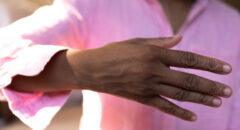
Dupuytren’s contracture is a chronic hand condition that affects the connective tissue beneath the skin of the palm and fingers, leading to progressive thickening and tightening. Over time, this can cause one or more fingers—most commonly the ring and little fingers—to curl inward toward the palm, impairing hand function and dexterity. While the condition is painless for many, its physical impact on grip and hand movement can be debilitating.
Early diagnosis is critical for effective management and to prevent severe contractures that might require surgery. This guide explores the clinical presentation, risk factors, diagnostic techniques, and the importance of early recognition of Dupuytren’s contracture.
Understanding Dupuytren’s Contracture
Dupuytren’s contracture involves the abnormal thickening of the palmar fascia—a layer of tissue that supports the skin and helps the fingers move. Normally, this fascia is thin and flexible, but in Dupuytren’s, collagen builds up and forms nodules and cords that tighten over time. This tightening pulls the affected fingers toward the palm, restricting extension.
The condition usually develops slowly over years, and patients may not notice significant symptoms in the beginning, which often delays diagnosis.
Early Signs and Symptoms
Diagnosing Dupuytren’s contracture begins with identifying its subtle early signs, which include:
-
Nodules: Small, firm lumps under the skin of the palm, often near the base of the ring or little finger. These nodules may be tender at first but typically are painless.
-
Skin Changes: The skin over the nodules may appear puckered, dimpled, or thickened.
-
Contracture Development: As the condition progresses, fibrous cords form and tighten, leading to limited finger extension.
-
Finger Position: Eventually, fingers begin to bend inward, and patients may struggle to fully straighten them.
-
Functional Limitations: Difficulty placing the hand flat on a table (positive tabletop test), trouble gripping large objects, or trouble with hand hygiene and putting on gloves.
Risk Factors and Patient History
Certain populations are more predisposed to Dupuytren’s contracture, and understanding patient risk factors is an essential part of diagnosis:
-
Age: It most commonly affects individuals over 50.
-
Sex: Men are two to three times more likely to develop the condition than women.
-
Ancestry: People of Northern European descent have a higher incidence.
-
Genetics: A family history of Dupuytren’s significantly raises the risk.
-
Lifestyle Factors: Smoking and heavy alcohol consumption may increase susceptibility.
-
Associated Conditions: Diabetes, epilepsy, and manual labor involving repetitive hand trauma are linked to increased risk.
When evaluating a patient, physicians carefully take a thorough medical and family history to assess these risk factors, which can support the clinical suspicion of Dupuytren’s.
Clinical Evaluation and Diagnostic Process
Physical Examination
The diagnosis is primarily clinical, based on physical signs and functional assessment:
-
Inspection and Palpation: The provider examines the palm and fingers for nodules and cords. Palpation can reveal the density and location of fibrous bands.
-
Range of Motion Testing: The ability to extend the affected fingers is measured. Limitation in extension—especially at the proximal interphalangeal (PIP) and metacarpophalangeal (MCP) joints—is a key finding.
-
Tabletop Test: Patients attempt to place their hand flat on a table. Inability to do so usually confirms contracture.
-
Finger Deformity Measurement: A goniometer may be used to measure the angle of finger contracture accurately, which helps track progression.
Differentiating Dupuytren’s from Other Conditions
Other conditions can mimic Dupuytren’s contracture symptoms:
-
Trigger Finger: Characterized by painful finger locking due to tendon inflammation.
-
Rheumatoid Arthritis: Inflammatory joint disease causing swelling and deformity.
-
Carpal Tunnel Syndrome: Numbness and tingling due to median nerve compression.
-
Volar Plate Contracture: Post-injury contracture affecting finger extension.
A careful history and examination help distinguish these, as Dupuytren’s contracture specifically involves the palmar fascia and tends to cause painless contracture without inflammation or nerve symptoms.
Diagnostic Imaging and Tests
Imaging is rarely necessary for diagnosing Dupuytren’s contracture but may be used in atypical cases or to rule out other diagnoses:
-
Ultrasound: Can visualize thickened fascia and cords.
-
MRI: Provides detailed soft tissue imaging, useful in complicated cases.
Generally, diagnosis is clinical, and imaging does not change initial management.
When to Refer to a Specialist
If Dupuytren’s contracture is suspected, especially with functional impairment or progressive contracture, referral to a hand specialist or orthopedic surgeon is recommended. Specialists can:
-
Confirm diagnosis and stage the severity
-
Discuss treatment options, including minimally invasive procedures (needle aponeurotomy, collagenase injections) or surgical fasciectomy
-
Monitor progression and functional impact
Importance of Early Diagnosis
Early diagnosis enables patients to receive timely education and appropriate treatment. Although mild cases may only require observation and hand therapy, more advanced disease can benefit from early intervention to restore finger function and improve quality of life.
Delays in diagnosis and treatment can lead to severe contractures, making correction more difficult and increasing the risk of complications.
Conclusion
Dupuytren’s contracture is a progressive hand condition that can severely impact hand function if left untreated. Diagnosis relies heavily on recognizing early signs, understanding risk factors, and performing a thorough clinical examination. Patients experiencing lumps or stiffness in their palms or difficulty straightening their fingers should seek evaluation by a healthcare professional.
With proper diagnosis and timely management, many individuals can maintain hand function and avoid significant disability.








